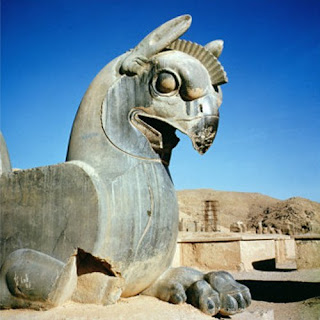Batik
Batik
This is a little used process these days apparently, but is still widely used in some countries.....
I'm thinking of the lovely fabrics in Africa and India for starters.
Here we attempt to get familiar with the process in order to produce a landscape in Batik at A1 size. (Wouldn't an A4 have been more appropriate Ursula???!)
We start by doing some test swatches in different buckets of dye, each time the next dye affects the previous one as it adds its colour to it in different intensities depending on how long its left in the dye bucket. Hence, timing is all important, if you want to keep things a bit predictable! And lots of testing.
Wax! The main ingredient in the world of Batik. You can see here the dial where the temperature can
be controlled electrically (easy peasy; we just plug in; how do they do it in Africa & traditional cultures
where this technique is still used a lot I wonder?) You can also see the jonting stick, which is the usual way (apart from a paint brush) to apply the hot wax to the fabric. We will learn that it's not that precise; blobs all
over the shop!!
A bucket of orange dye, just to show its intense colour. Its useful to remember that over time,
however, that the strength of the dye decreases....
Here is the photograph I have chosen to use for the Batik project. It gets enlarged to the actual size (A1), & then we trace its detail onto our fabric, using pencil. This is vital in order to have some hope of getting
wax in the right places. Once the image is transferred to the cotton fabric, it is then stretched onto a frame .
This is the fabric stretched onto a frame; it needs to be tight as a drum or horrible wrinkles occur. Oh Yes !
You can also see the brush I used to do apply the wax.
You can see in the photo that a layer of wax has been applied (everywhere I want to keep the neutral background colour) and its now ready for its first dip, into a pale blue dye. first however, the piece must be thoroughly wetted, before its dye treatment. The dye is poured from a bucket into a large plastic bath, then the piece is submerged carefully into the pale blue dye.
Immersion in the pale blue dye bath for a set number of minutes (tests were carried out on swatches first
to determine the right amount of time), then carefully rinsed.
Time up! Carefully pouring the dye back into the bucket, for others to use
Rinsing carefully.... Its important not to squeeze the fabric at all, or it will crack the wax; not something that you want at this stage. Cracking will allow colour to bleed into areas where you want to keep waxed; in this case blue would bleed into my 'sand' area, which is the neutral colour
hanging up to dry..... delicate stuff. Easily ruined by accidentally touching another piece, and dye transferring.
Next, wax is applied to the areas that I want to keep this pale blue colour, using the same process of stretching the canvas on a frame. The next colour is a dark blue.

Et voila!!
Next, wax is applied to the areas that I want to keep this pale blue colour, using the same process of stretching the canvas on a frame. The next colour is a dark blue.
Close up of the boats
Close up of the background.
Then I need to wax the areas that I want to remain this dark blue colour, before submerging the piece in the next colour.
So, the sky and the top detail of the boat are the only areas I wax in order to keep these
the dark blue colour as above.
Next the piece is dipped in a bath of green dye:
And finally into a brown dye:
I should add that after each dye, the piece is rinsed in water thoroughly before the next colour immersion.

Et voila!!

















Comments
Post a Comment